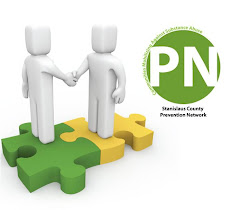Sober up our kids by raising taxes on 'alcopop' beverages
From the Modesto Bee Community Opinion Page. In my youth we did Gallo White Port with lemon juice from lemons that we picked from the neighborhood trees and squeezed ourselves. For the sophisticate, we served up shoplifted sloe gin mixed with 7-Up. Then Boone's Farm and other juicified wines arrived. Mostly, though, we became drunks the same way our fathers and uncles had — on beer.
Today, alcohol corporations bombard our kids with a host of exotic beverages, given rock 'n' roll names with seductive-looking labels, at exorbitant prices. Today, boys are selectively seduced by rounds of alcoholic elixirs and girls are bewitched by brews and potions that promise endless excitement.
On May 7, the state Assembly will consider Assembly Bills 345, by Lori Saldaña, D-San Diego, and 346 by Jim Beall Jr., D-San Jose, which would establish that "girlie drinks," "alcopop," "cheerleader drinks," "starter drinks," "energy drinks," "Jell-O shots," "mists," etc., will be classified as malt liquor.
These are pop names for alcoholic beverages designed and marketed for entry-level drinkers, code for underage drinkers, especially girls. This legislation would remove alcopops from 15,000 convenience stores and reclassify them to a higher-taxed liquor category and, in turn, up their prices. The expectation is that they would be priced out of the youth market. Additionally, the higher tax classification might generate revenue, as much as $54 million, that could be directed to alcohol abuse treatment for youth.
The bills are part of a strategy against the liquor corporations that, like the tobacco giants, purposely target underage drinkers. Apparently, the logic is to hook kids early and establish their purchasing loyalty even if it means bad health, alcoholism, maiming or death for some. About 20percent (11 million) of America's alcohol consumers are underage.
The legislation is defense against an onslaught of sweetened, prettified alcoholic drinks. They're pimped under labels using fruit juice and cool jargon as a cover for their alcoholic character. They even contain "natural additives" such as ginseng and caffeine to make them appear like soft drinks.
Girlie drinks attract 12- to 14-year-olds more than 25- to 30-year-olds by a rate of 76 percent to 36 percent, according to national research done in 2004. The packaging for these drinks is designed with the underage drinker in mind, and labeling of alcohol content is purposely vague and difficult to read. Even the placement of these products in stores is done so that consumers have difficulty distinguishing them from soft drinks. Advertising is geared toward underage drinkers, using technology popular with youth, such as text messaging, music videos and stylish clothing with liquor logos.
Recently the Stanislaus County Children's Council was presented the opportunity to support passage of AB 345 and AB 346. Lee Honoré Means, executive director of Girl Scouts Muir Trail Council, serves on the Children's Council. Means proposed that the council send correspondence to seven San Joaquin Valley legislators, encouraging them to support these bills. The council did.

